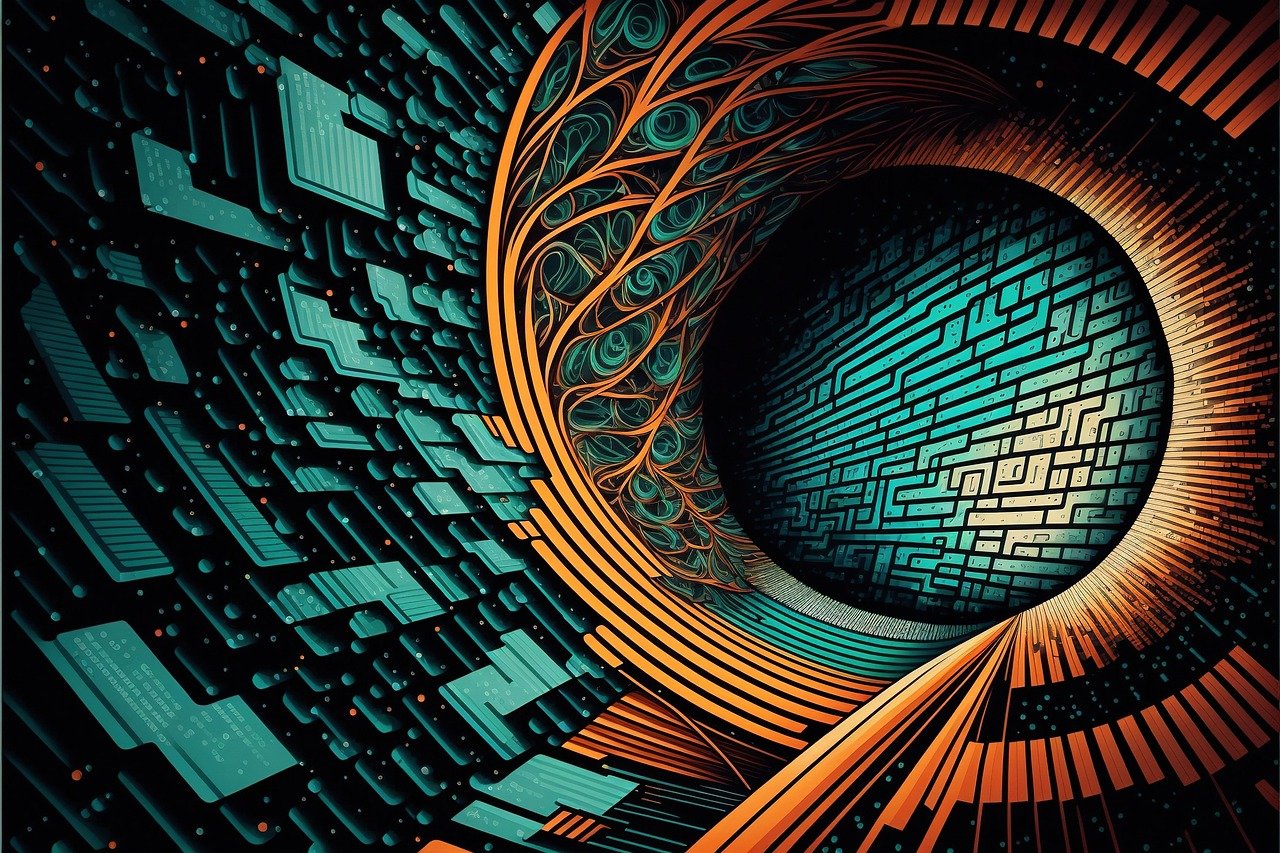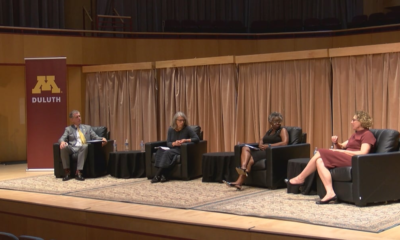Education
5 ways educators can lead better in the age of AI

Preparing to deliver the keynote address at the Leading for Deeper Learning conference has sparked some thoughts about what today’s education leaders, faced with the rapidly evolving challenge of AI, need to know and do. Here are five concepts that every leader should understand, all of which are built on the idea that today’s leaders should be focused on creating human interdependence and should be leading not for today, but for five to 10 years from now.
Develop a clear vision of what good learning is
In this age of rapidly developing AI tools, all education leaders must understand what good learning is for today’s students. They need to understand the impact of AI, not just on students today, but on the society those students will live in. By the time today’s 5- or 6-year-olds become adults, what will their world look like, and what skills will they need to succeed? AI has become a life form. Education leaders have to co-evolve and live with it. On one hand, every student needs AI literacy, and on the other hand, teaching skills that are going to be done by AI in two years is not really meaningful.
The future is uncertain, so leaders need to move from a vision of certainty to uncertainty. For example, right now, we know that New York exists. If you get a map, you can see the streets and choose the sights you want to see. You know how to prepare if you plan to be in New York for five days. You bring your clothes, your toothbrush, your toothpaste. But if someone said instead, “Okay, let’s go to Mars,” most people would have no idea how to pack. So to some degree, education leaders are making a guess when they’re trying to build a future.
Our children are the future-builders, so school should prepare them to create the future. To me, that means focusing on personalization. It means having students find and solve meaningful problems using creativity to apply their knowledge. It means creating human interdependence.
Understand your students and their changing world
School leaders have always needed to understand their students: What has this new generation been exposed to? What are they thinking? This is a difficult time. Students are faced with a lot of new information, division, and fragmentation. When you factor in rapid technological changes, educators trying to understand their students are faced with something bigger than the traditional generation gap. No other technology has been able to learn from us as quickly as AI has. AI remembers things. After you use AI for three months, it knows a lot about you and your cognitive patterns. Our children interact with this life form, so knowing what’s meaningful to them – whether that’s a video game, a social media account or a problem they’re having at school – is important.
Focus on what only you (and your teachers) can do
School leaders shouldn’t do everything. They’ve hired other people to do other jobs, and they need to motivate those people to do their jobs so that the leaders themselves can focus. Leaders need to understand that they won’t always be leading their school or district, so if they want the changes they’ve made to be carried out by people who follow them, they should focus on cultivating people who share similar ideas and about changing the culture.
In their interactions with teachers, education leaders have traditionally emphasized instruction. They have wanted teachers to become effective and efficient instructional machines. Still, with all of the technological tools at their disposal, teachers’ best value probably lies not in their instructional capabilities, but in how they do things only human beings can do: organize, facilitate, support, and coach students. This is Deeper Learning. It’s not just about going deeper into a subject matter. It’s about treating each student as unique with their interests, talents and potential. It starts by inspiring students to believe in their capacity to solve meaningful problems.
Empower students to lead their learning
Leaders need to mobilize students. They need to lead with students, so that students will take ownership of their learning. Every student needs to start by leading their education. They have AI and other technology and advisors and support, but instead of listening to lectures, they build their own learning by solving meaningful problems. When a problem is solved, they move on. Once they have experience leading their learning, they can move on to leading a community of education authentically.
When they lead a community, they’ll learn that they need other people to accomplish their goals. They’ll have the opportunity to develop social and psychological attributes such as caring, loving and wisdom. They’ll discover that being selfish does not necessarily serve their self-interest.
Create experimental spaces to fuel transformation
On a practical level, school leaders need to understand what’s changeable in their schools. Once they understand that, every school leader should build transformational changes for the future. To implement those changes, they can start small by experimenting in a small setting like a microschool or a “school within a school.” This is a place where they can allow exceptionality to exist, offer something diverse to every student, and try something different to help get disengaged students excited about school.
All of these ideas connect back to the idea of human interdependence. Unless human beings trust each other and try to build a better world (that may involve AI), many human beings really have no value. They may have self-esteem or self-respect, but their value has to be realized through creating a better place for others. In education, our value is not in competing with AI, but in using AI to make schools more interesting and to create a better place for human beings.
Opinions expressed by SmartBrief contributors are their own.
Subscribe to SmartBrief’s FREE email newsletters to see the latest hot topics on educational leadership in ASCD and ASCDLeaders. They’re among SmartBrief’s more than 200 industry-focused newsletters.
Education
NetDragon Showcases AI-Powered Education Solutions at UNESCO Digital Learning Week 2025 – itemonline.com
Education
RFK Jr. testifies on Capitol Hill, AI in education, generational change in Congress – Spectrum News
Education
STC Computer Information Technology program Leads the Way for AI Education

Texas Birder Business
By Joey Gomez
McALLEN, Texas – Artificial Intelligence (AI) is at the core of South Texas College’s Bachelor of Applied Technology in Computer Information Technology (BAT-CIT) program as it pioneers industry certificates on a statewide and national scale for students.
Leadership and faculty with the program say they have now awarded more than 2,250 certificates to students taking BAT-CIT courses in the five years since integrating what the program calls AI-focused “microcredentials” tied to Google and Amazon Web Services (AWS) in fall 2020.
The priority on industry credentials is giving graduates a unique and competitive edge in the job market, according to program Department Chair Saeed Molki.
“In the entire state of Texas and throughout the entire United States, no one has done such a thing,” Molki said, referring to the number of credentials awarded to students. “We do not overstate all the work we have done for students in the last five years.”
Crediting college leadership including STC President Ricardo J. Solis, Ph.D., along with Vice President and Provost for Academic Affairs and Economic Development, Anahid Petrosian, Ph.D., and Dean of Math, Science, IT and Bachelor Programs Ali Esmaeili, Ed.D., for encouraging the push toward microcredentials and AI, Molki said the effort began with a vision to embed industry certifications directly into courses.
The effort culminated this year in 2025 as the program added four new AI-related courses, which includes an Advanced Artificial Intelligence course for fourth-year students and an upcoming Data Science and Machine Learning in Cybersecurity course which begins in spring 2026.
Each course is meant to build on the last to create a progressive pathway to advanced AI concepts, according to BAT-CIT faculty.
“So essentially, students are going to be getting a certificate with every class,” said Assistant Professor of Computer Science, Nicholas Hinojosa. “Last semester, we even implemented that every student who is taking our 1301 class, which is our most basic class, will complete a certificate in Google Artificial Intelligence Essentials. These are students who are coming fresh from high school to STC.”
The BAT-CIT program offers seven industry-recognized certifications, that align with coursework so students earn credentials as they progress through the program.
CIT Assistant Professor Menghung Wu, Ph.D., emphasized that the curriculum builds from Python to machine learning and then to advanced AI which ensures students understand both the technical skills and theory behind AI systems.
“AI is no longer just a tool, it’s the foundation of how technology is advancing,” Wu said. “This is why in our program, we don’t just introduce students to the basics, we guide them step-by-step into the core of artificial intelligence. That deeper knowledge is what will set them apart as innovators in the workplace.”
BAT-CIT student Andrea Rios is the founder and current president of the program’s Computer Science Club and organizes various activities and speakers for students. Reflecting on the priority the program places on AI-related credentials, Rios said faculty are doing a phenomenal job by embracing the new technology and gauging the industry.
“The biggest way the faculty in the BAT-CIT program help students is by understanding the market and the workplace and realizing just how quickly it changes, especially in the technology industry,” Rios said. “At STC, we are taught to adapt and I think that’s the most important thing I have taken from my time here.”
For more information on STC’s Computer and Information Technologies program visit www.southtexascollege.edu/academics/computer-info-tech/index.html.
-

 Business1 week ago
Business1 week agoThe Guardian view on Trump and the Fed: independence is no substitute for accountability | Editorial
-
Tools & Platforms4 weeks ago
Building Trust in Military AI Starts with Opening the Black Box – War on the Rocks
-

 Ethics & Policy1 month ago
Ethics & Policy1 month agoSDAIA Supports Saudi Arabia’s Leadership in Shaping Global AI Ethics, Policy, and Research – وكالة الأنباء السعودية
-

 Events & Conferences4 months ago
Events & Conferences4 months agoJourney to 1000 models: Scaling Instagram’s recommendation system
-

 Jobs & Careers2 months ago
Jobs & Careers2 months agoMumbai-based Perplexity Alternative Has 60k+ Users Without Funding
-

 Education2 months ago
Education2 months agoVEX Robotics launches AI-powered classroom robotics system
-

 Podcasts & Talks2 months ago
Podcasts & Talks2 months agoHappy 4th of July! 🎆 Made with Veo 3 in Gemini
-

 Funding & Business2 months ago
Funding & Business2 months agoKayak and Expedia race to build AI travel agents that turn social posts into itineraries
-

 Education2 months ago
Education2 months agoMacron says UK and France have duty to tackle illegal migration ‘with humanity, solidarity and firmness’ – UK politics live | Politics
-

 Podcasts & Talks2 months ago
Podcasts & Talks2 months agoOpenAI 🤝 @teamganassi


























